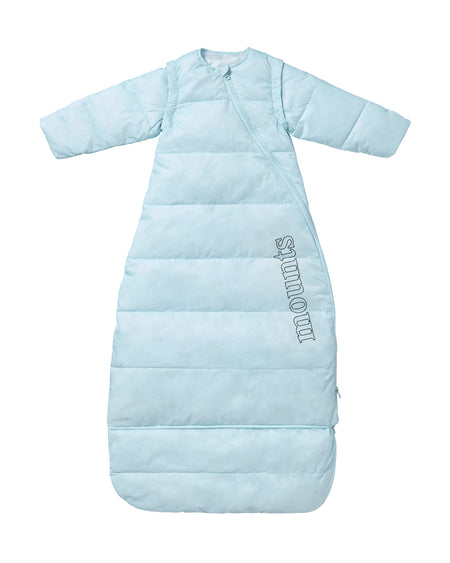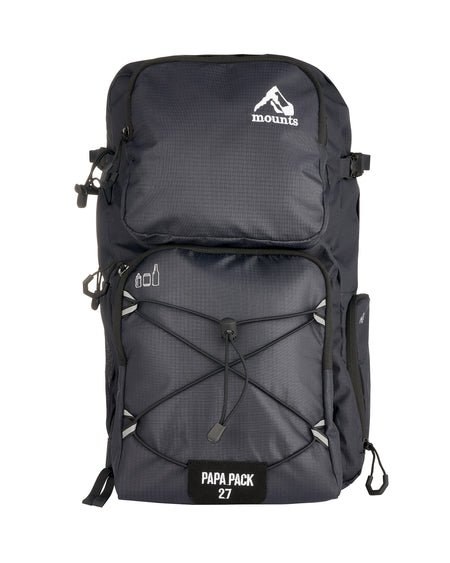Sleep Temperature Guide / SUDI
November 19 2020 – Timothy Butcher
The ideal room sleeping temperature for a baby is 16°C - 20°C or 18°C - 22°C depending on the source.
Every baby is different and may sleep hot or sleep cold under the same conditions. It is important to be able to read a baby’s temperature. The quickest way to check is to touch your hand on the skin of the back of their neck or on their chest. If they feel too hot or sweaty, remove a layer of clothing. Likewise, add a layer of clothing if they feel too cold. A baby’s hands and feet usually run cold and are not a good gauge of temperature.
Overheating or thermal stress in babies has been linked to SUDI (Sudden Unexpected Death in Infants). Babies regulate their temperature through their heads. Specifically, 85% of their temperature is lost through their face. Loose blankets, tummy sleeping, or other obstructions to the face can severely interfere with a baby’s ability to regulate their temperature.
Providing a safe sleeping environment while staying in a tent, camper, or holiday cabin becomes challenging for two main reasons – insulation and exposure to the elements. In a typical home, the walls, floor and roof are insulated, which helps retain heat in a cold environment and repel excess heat in a hot environment. Room temperatures therefore stay relatively stable. When sleeping inside a tent, there is no insulation, the ground is in direct contact with the earth and there is little protection from sun rays.
Heat is constantly being transferred, primarily through the process of conduction and convection. Conduction transfers heat between two solid objects trying to equalize the temperature of the objects to each other. Convection transfers heat between air and liquid of differing temperatures. When sleeping against the ground, your body (a solid object) is trying to equalize with the earth, drawing body heat away from you into the ground. Your body will never output enough heat to match the earth and will run you cold. Likewise, if your skin is exposed to the air, heat will transfer. If the air is moving (i.e. wind), more heat will transfer as your skin interacts with more air.
In addition to transferring heat, solar radiation is constantly captured and absorbed. Typically, large masses like a house will absorb heat and disperse it evenly. Small masses like a tent absorb heat from the sun, quickly heating the inside of a tent in a manner similar to an oven. It is typical for a tent in direct sunlight to be up to +10°C during the day, just like you may experience sitting inside a car on a hot sunny day. Likewise, in the absence of sun, the tent will disperse or lose heat very quickly. It is typical for a tent at night time to be the same temperature as outside, minus any wind chill. It is not accurate to expect body heat to warm the tent.
Managing all these challenges in the wild can be hard. The below is some practical advice and questions to ask yourself. Keep your little one safe, warm and happy while camping. The better prepared you are, the less maintenance your little one will be and the more memories you can make together as a family. Your little one has day time naps and sleeps at night. Don’t miss the opportunity for a well-.prepared daytime nap. It will give you time to relax, organize and breathe.
Warmth:
-
Prepare for a variety of temperatures. Bring a daytime sack and a night time sack. Be prepared with extras if you are new to the terrain, tent or gear.
-
Avoid direct ground contact.
-
What clothing layers do you have?
-
Do you have proper ground insulation? What sleeping mat are you using?
-
Does the ground have an incline, holes or divots? Are the mat or sleep sack materials slippery? Is there an opportunity for your little one to slide or fall off their sleeping mat?
Sunlight:
-
What is the expected weather forecast – cloudy or sunny, and how many daylight hours are there?
-
Is your tent located in direct sunlight? Can you position yourself into the shade of trees or surrounding terrain?
-
Does your tent allow for good airflow? Can you position yourself to absorb prevailing winds to help manage the inside tent temperature?
-
Is your tent bright or dark? Do you need to adjust if your little one is used to sleeping in the dark?
Moisture:
-
Be aware of moisture but not overly concerned. Just as you experience cold from a breeze when exiting a pool, moisture can develop inside a tent and affect the sleeping persons’ temperature.
-
Moisture mainly develops inside a tent from a lack of ventilation. As a person’s breathing exhales, moisture condensates and over time can develop into wetness.
Pre plan, plan and plan again.
Safe sleeping while in the wild is not only vital for safety of your little one but the more comfortable they are, the more relaxing and more memorable your experience will be.
TOG is a measure of warmth. Like R-value, TOG measures thermal resistance between two surfaces of material. It is the common unit displayed for thickness of a duvet, blanket or quilt. The higher the TOG, the more warmth the duvet will provide. Baby and toddler sleep sacks/wearable blankets range from 0.5 to 3.5 TOG while adult duvets usually range from 4.5 to 13.5 TOG.
All Western regulations say the max TOG for a young child's indoor sleepwear should be 3.5 TOG. This applies for indoor use only and it is typically guided that inside a winter home with a room temperature of 18°C to 22°C a pair of warm pyjamas with 2.5 TOG should be used. There are almost no regulations for outdoor use with the most common outdoor application of a garment sold with a higher than 3.5 TOG rating applying to footmuffs (blankets) seen on prams.
Mounts sleepsacks with greater than 3.5 TOG are intended for outdoor use only. Warning tags should be read and applied appropriately.






